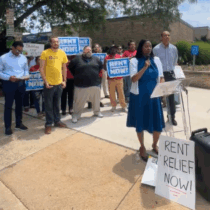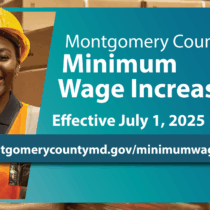
“It is time for East County to get its due,” declared Councilmember Kristin Mink as her fellow councilmembers unanimously approved the Fairland and Briggs Chaney Master Plan Tuesday.
The plan updates a 1997 Fairland Master plan and sets “a clear vision for equitable, just and prosperous future for the Fairland community,” the council noted in a news release.
The plan “encourages investment,” said Council President Andrew Friedson during Tuesday’s council meeting. “This is going to help us be in a better position to help.”
The plan will enable the county to improve the area “at a faster clip,” said Mink, who is the councilmember for that region.
The master plan boundary consists primarily of properties and neighborhoods in Fairland and Briggs Chaney along a five-mile stretch at the U.S. 29 Corridor near Paint Branch on the south and toward Greencastle Road on the north.
It lists suggested policies for land use, zoning, housing, transportation, historic preservation, parks and the environment.
“As a long time East County resident, I am honored to vote in favor of the Fairland Briggs Chaney Master Plan,” said at-large Councilmember Will Jawando.
The master plan emphasizes community gateways and activity centers for community gateways and mixed-use, high-density centers near public transportation. It calls U.S. 29 a “transit-first” corridor.
It also recommends an East County Resilience Hub that would be a community center for daily community needs and calls for a “healthy community food system that includes healthy grocery and dining destinations, farmers’ markets, and community gardens.”
The plan was written by the Montgomery County Planning Department.
“The zoning and land use recommendations in the Fairland and Briggs Chaney Master Plan embrace a new future for this community,” said Planning Board Chair Artie Harris.
“One that shifts from a spread out, disconnected suburb reliant on automobiles to a more equitable, transit-oriented, and compact community where centers of activity, employment, and open space are closer to each other to allow for safer, more comfortable access to a greater variety of travel modes. These recommended actions will improve economic mobility and the ability to experience the area’s public realm.” he said.
Montgomery County Council Approves the Fairland and Briggs Chaney Master Plan. 📰Learn more: https://t.co/NxtOpiBvvA pic.twitter.com/mQ9TQwHKze
— Montgomery Council (@MoCoCouncilMD) December 12, 2023


Comments are closed.